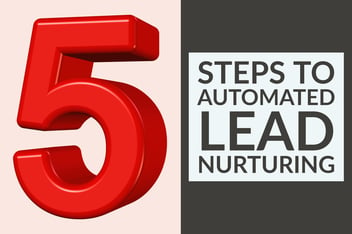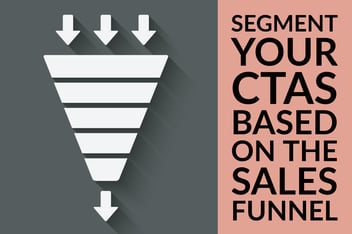Why Marketing Automation and HubSpot Require Content

Blog posts. Downloadable offers such as whitepapers and case studies. Videos. Social media updates. Infographics. Podcasts. Contributed articles.
In a word: content.
Content is the engine that drives inbound marketing. Without it, no marketing automation or software solution—not even HubSpot—can significantly improve your marketing performance. It all starts, and builds on, content.
How will you resource all the content you need? Find the answer in our HubSpot Problem/Solution: Content Volume resource.
1. Content drives website traffic.
Buyers, both consumers and B2B purchasers, turn more and more to online research when seeking solutions and making buying decisions. In fact, as many as 90 percent of B2B buyers research products or companies on the web before making a purchase.
When your prospects search for a solution to problem you can solve, they are more likely to find you if you blog about their search terms, especially when you provide useful information rather than company promotion.
Steady blogging boosts your website’s search results, which is critical in an environment where 60 percent of clicks go to the first three organic results.
But it takes more than an occasional post. You need to update your business blog regularly and frequently.
How frequently? Well, HubSpot identifies 40 posts per month as an optimum blog volume, and even then, you can expect it to take at least 3 months to reach the critical mass needed to truly impact SEO and website traffic.
Each of your blog posts should include calls-to-action and links to additional content on your website, gated behind landing pages, that set up opportunities to convert visitors into leads.
2. Content drives lead generation.
Inbound marketing generates online leads by bringing traffic to the website—through organic search with optimized blog posts and landing pages, and through social media, both earned and owned. Actual leads are captured when visitors complete a form to access an offer on the site, providing contact information in exchange for the offer.
Many of the offers involve content: whitepapers, ebooks, case studies, webinars, videos, infographics, or newsletter subscriptions.
While not every lead capture opportunity or offer involves downloadable content—some offers could be discounts, free trials, or other desired items—content is likely to be the core of your offerings for top-of-the-funnel leads.
Your website should have content offers to appeal to all of your customer personas< http://www.jonespr.net/worksheet-for-mapping-content-to-your-personas> and to all stages of the sales funnel, from introductory ebooks or videos to more advanced usable content such as calculators and templates or case studies and testimonials.
Check out this list of 25 content ideas for inspiration in creating content that addresses your customers’ pain points.
3. Content drives lead nurturing.
Inbound marketing begins with bringing traffic to your site, and then converts those visitors into leads with offers and landing pages. But there is still a distance to be covered between a cool lead and a closed sale.
You bridge that gap with lead nurturing—and more content.
Automated lead nurturing, which is one of the key components of HubSpot’s comprehensive inbound marketing approach, is designed to foster an immediate and personalized connection with new leads by presenting related offers that may move them further down the sales funnel.
For example, if a visitor to your veterinary office website converts on an offer for an introductory ebook about cat care, your lead nurturing workflow would automatically extend an email offer for something related, such as healthcare and vaccination checklist for cats. The next offer in the series might be for a checklist for choosing a veterinarian or a worksheet for tracking your cat’s health.
Each new offer is designed to provide more specific information, possibly more information about your own business, and to further the trust the lead has in your organization as a source of information.
The lead nurturing system can also point to lead qualification criteria by indicating when a lead is accessing materials that typically precede a sale.
Again, it is the content moving leads closer to a sale. And even when a lead is qualified and moves from the inbound/automated portion of your marketing timeline to a direct contact with sales, there is more content to be presented at that level: product comparisons, presentations, users’ guides and more.
All of that content is essential to making the most of your inbound marketing strategy and investment in marketing automation such as HubSpot. Trying to drive inbound marketing without content would be like trying to drive a car without fuel.
The challenge for a majority of marketers, however, is finding the resources to produce the needed content. While there are three primary places to find resources—in-house, freelance or agency—those options all come with different benefits. Find our solution to the content generation dilemma in our downloadable whitepaper: HubSpot Problem-Solution: Content Volume. We have an answer to how much content you need and how to create it to maximize the results of your inbound marketing strategy.
-1.png?width=1652&height=294&name=Jones(RGB)-1.png)












